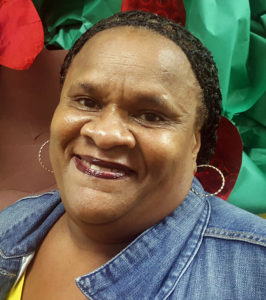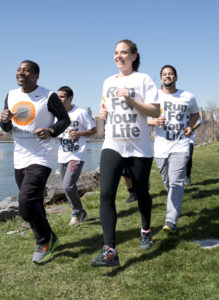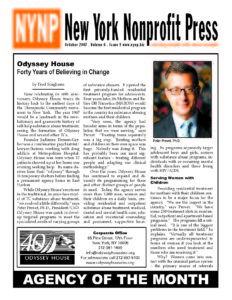By Thomas Urbain
AFP
Opioid abuse has turned into a public health crisis in America, blamed for the deaths of tens of thousands of people. But one hospital is determined to reverse the epidemic.
Since January, St Joseph’s Regional Medical Center, which boasts the largest emergency room in New Jersey, has stopped prescribing opioid painkillers in all but essential cases, slashing overall use by more than 40 percent.
While these powerful drugs are an “excellent” medication for terminal cancer patients or those with a broken leg, for the vast majority there are far safer courses of treatment, says emergency medicine chief Mark Rosenberg.
“In our first 60 days, we were absolutely shocked,” Rosenberg told AFP. “We had 300 patients. And out of those 75 percent of them did not need opioids.”
“It’s just a remarkable change of our prescribing habits and our management of patients’ acute pain,” he added.
In 2014, 14,000 people died from an opioid overdose in the United States, according to the Centers for Disease Control and Prevention (CDC). Since 1999, these powerful painkillers have caused 165,000 deaths.
The problem dates back to the 1990s but critics accuse President Barack Obama of being slow to respond to the scale of the epidemic, comparing his delayed reaction to Ronald Reagan’s sluggish response to the HIV/AIDS crisis.
Back in the mid-1990s, drug companies, professionals and authorities promoted opiates as a compassionate medicine that would end pain and minimized concerns that they were addictive.
“It led to the epidemic that we’re dealing with today,” says Andrew Kolodny, chief medical officer at Phoenix House Foundation, which treats addiction, and executive director of Physicians for Responsible Opioid Prescribing.
Clean for three months, former heroin addict Erik Jacobsen, 24, is determined to turn his life around after getting hooked on the class A narcotic.
– Endless cycle –
It all began when he popped a quarter of one of his grandfather’s painkillers in order to impress a girl he fancied.
“She was using it,” he told AFP at Odyssey House, a treatment center in New York’s East Village. “That’s why I got into it.”
He never tried to get them legally from a doctor. He didn’t have to, they were so easy to buy on the street in Gordon Heights, a hamlet an hour’s drive from celebrity summer resort the Hamptons on Long Island.
“There were so many kids that would get 200 pills a month and they’d sell it. And then they’d still owe their dealers because they were using more than they were selling. It would just be an endless cycle.”
That was until local authorities realized there was a problem, doctors clamped down on prescriptions and the police got involved.
“There was one night I couldn’t find any pills. So I tried heroin. And from there, I never went back,” he said.
He knew three people who died of an overdose, including a close friend.
“I just kind of accepted the possibility that one day I might die,” he said. “It’s horrible… It’s just crazy what it does to your body,” he said.
– White problem –
He got help when he was arrested and hauled before a judge, who ordered him to enter a treatment program or go to jail.
He likes Odyssey House and their approach but he is full of regret.
“I lost everything,” he said. He and his fiancee broke up because of his drug use and three of his best friends still refuse to talk to him.
“I want my life back,” he said.
He believes America’s opiate addiction is getting worse and wants to do more to help others before it’s too late.
“It’s scary,” he said. “The people that were young in my town at least, they didn’t realize what they were getting into,” he said. “You don’t really comprehend how intense it is when you try this thing.”
Experts say the opioid epidemic is a white problem. While heroin use is on the decline in inner city New York, painkillers are most abused in suburbs and rural areas — generally wealthier, whiter areas.
Rosenberg says St Joseph’s one-year fellowship, offered since January to New Jersey professionals, teaches safe alternatives, how to support patients to best manage pain and explain to them the dangers of opioids.
Next January, the program will expand to doctors, nurses and educators from across the United States and around the world, with enquiries already in from Britain, Canada, Scandinavia and Turkey.
“If you can sleep, if you can walk, then pain is not going to be your enemy. That’s what our goal is, to make you functional in pain, not to eliminate it completely,” said Rosenberg. “We need to do something.”
 In 2014, Sheryl, 53, was early in her recovery. She had recently completed a rehabilitation program and, though she felt good about her new life, she knew from past experiences that she needed the support of peers who understand the complexities that come from struggling with an addiction for over 30 years. As an older adult who had been addicted to crack cocaine for so long, Sheryl felt that the challenges she faced were unique and needed to be treated as such.
In 2014, Sheryl, 53, was early in her recovery. She had recently completed a rehabilitation program and, though she felt good about her new life, she knew from past experiences that she needed the support of peers who understand the complexities that come from struggling with an addiction for over 30 years. As an older adult who had been addicted to crack cocaine for so long, Sheryl felt that the challenges she faced were unique and needed to be treated as such.






